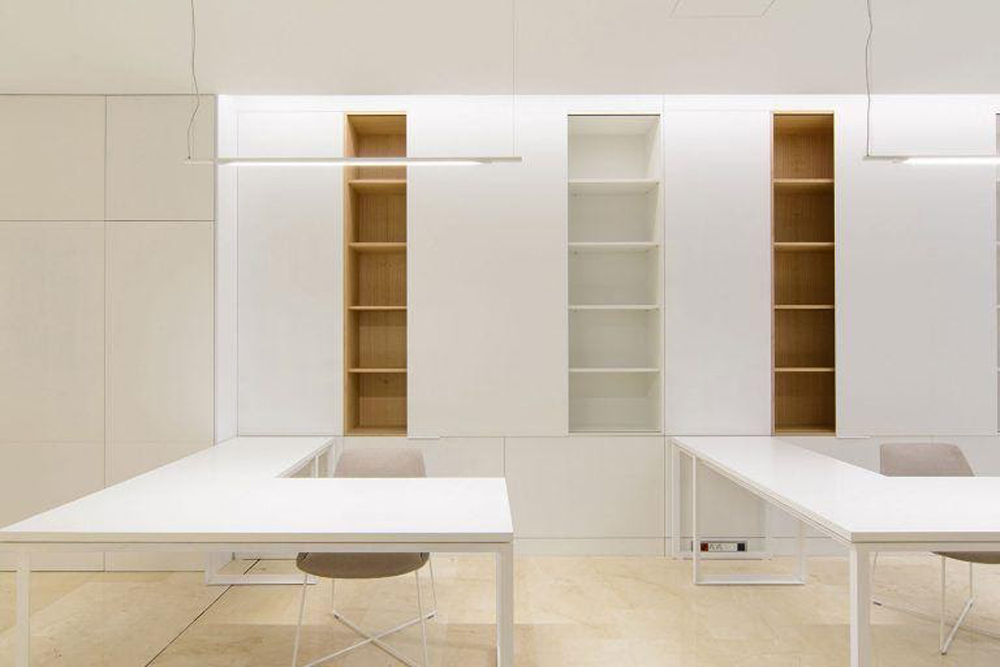Working like at home only requires two elements: eucalyptus and white
Natural eucalyptus wood veneer helps reduce stress in a unique work environment: the headquarters of a fishing company
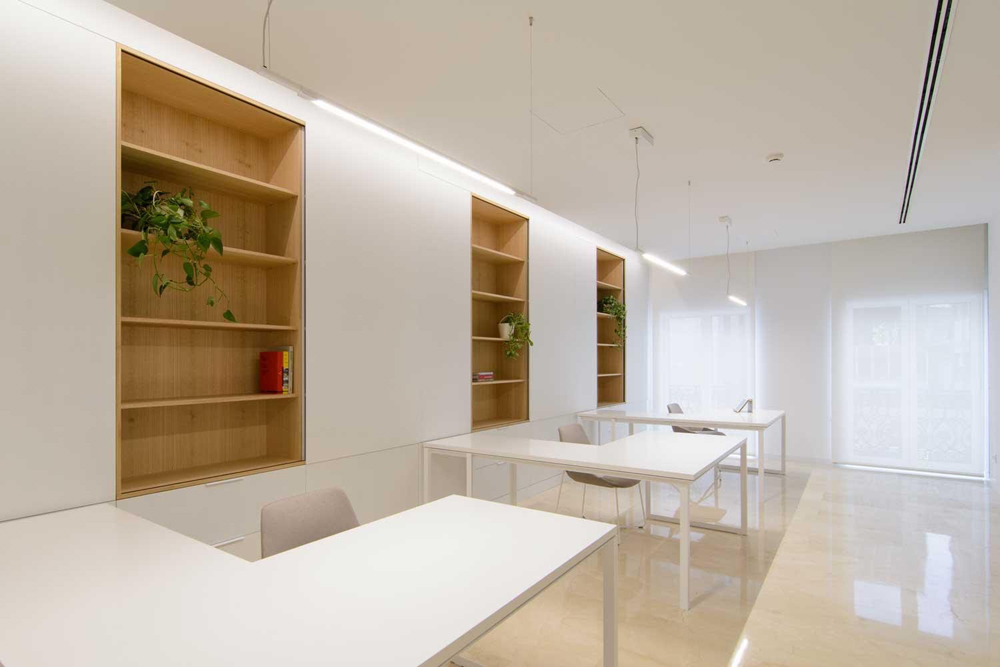
Elena Gimeno and Enrique Pereira, architects from Estudio V&BA, like to pamper the details. For this reason, when the Áncora fishing company commissioned them to renovate their office headquarters, they studied each of the possible combinations to achieve a single objective: to turn the workplace into a welcoming place. They talked with the company manager and with the workers, and invested time and effort in selecting the materials that would allow those who spend their working day there to work as if from home.
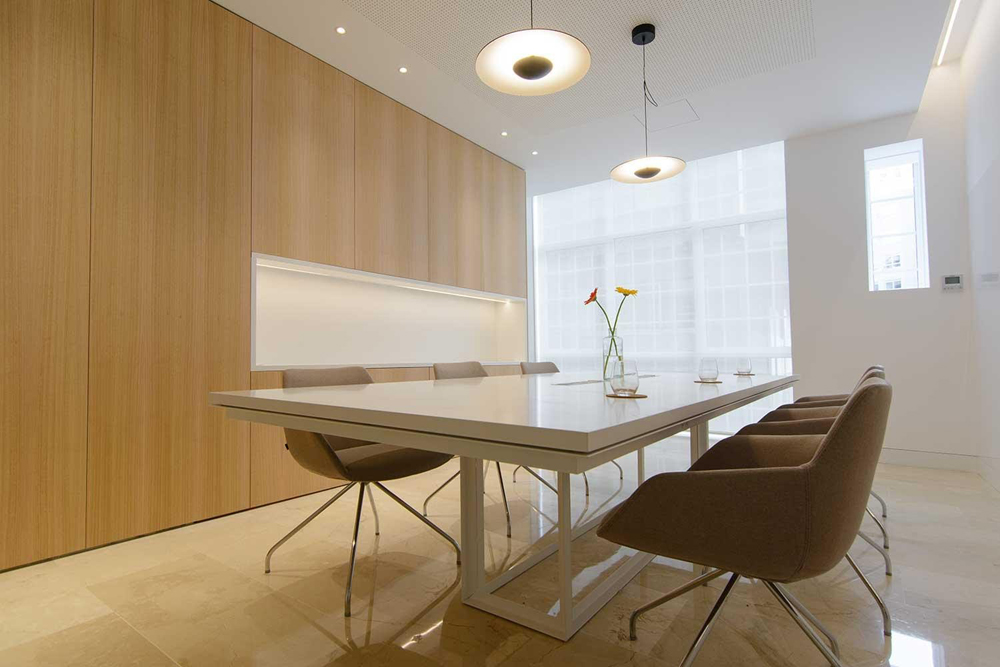
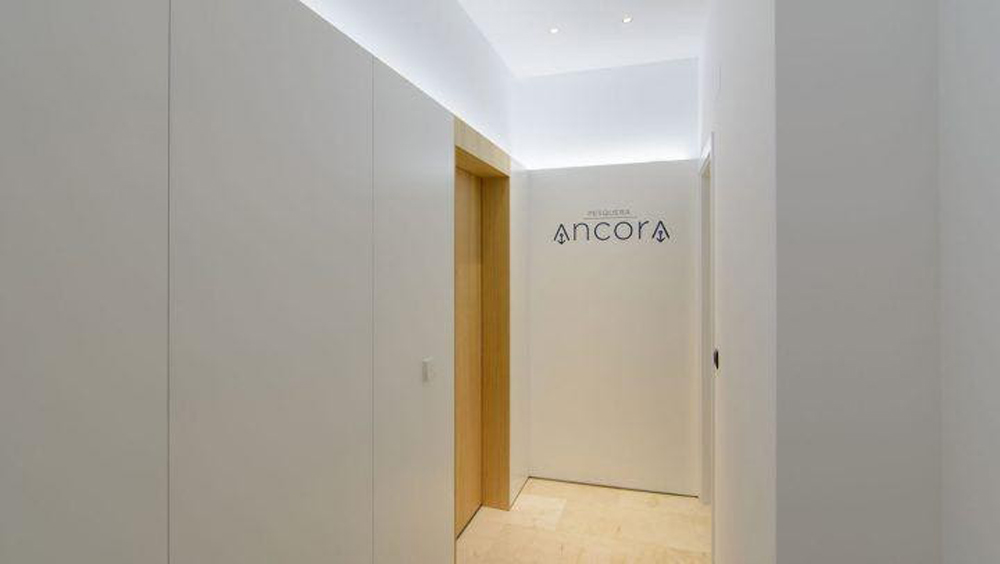
Others were added to this challenge: being a business in full international growth and a primary sector, the space had to adapt to all kinds of visits: from "the highest boss of Holland" to the fisherman who comes directly from the sea. No one should feel uncomfortable or overwhelmed by too pretentious decoration. "Sometimes you see some offices that are very bright, but that was not what was sought, but rather a neutral environment," explains Gimeno.
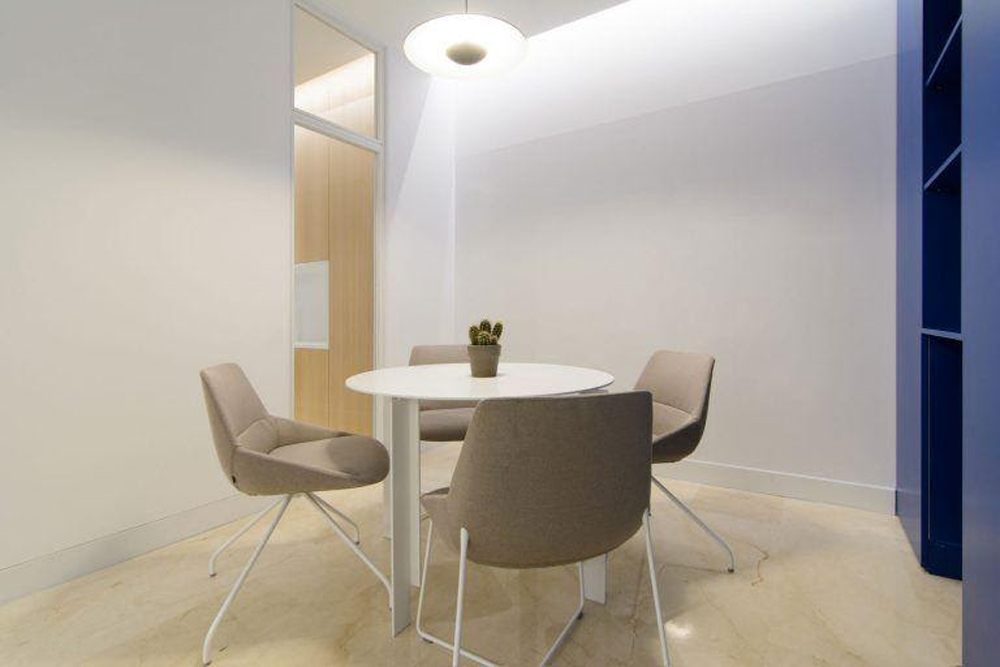
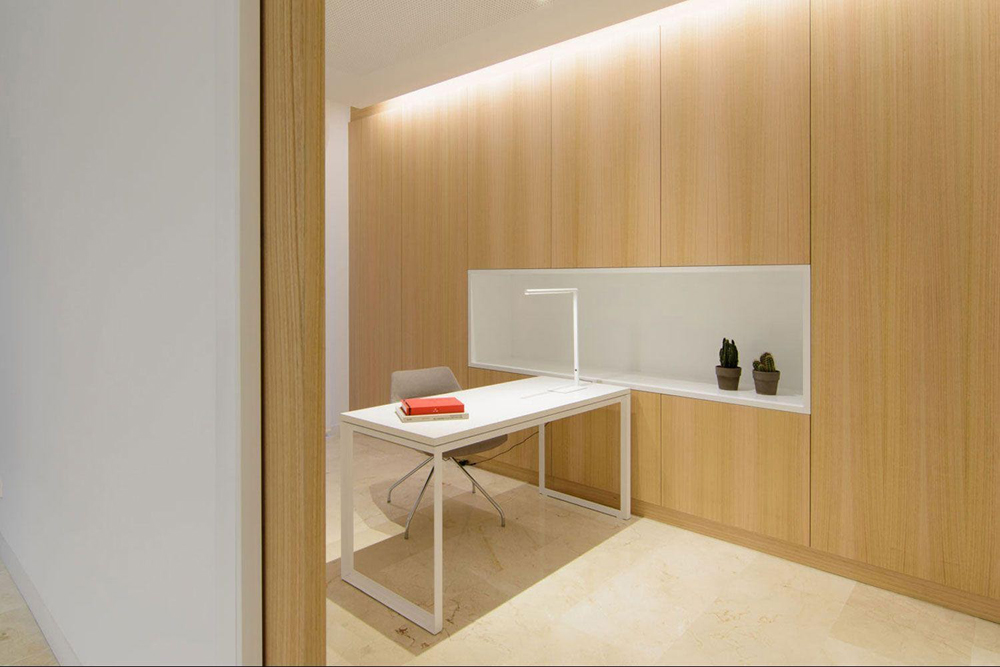
Furthermore, the floor plan was irregular and, to add another element, with a single glance they turned the marble floor that it already had into an essential element around which to structure the design of the rest of the project. “We ask ourselves: why am I going to remove a floor that today costs a fortune, that is resistant and that is perfect?” confesses the architect, born in Barcelona and based in Vigo. To solve the equation with the best possible result, she had the collaboration of María Pintos, a professional colleague with whom she has previously done other work.
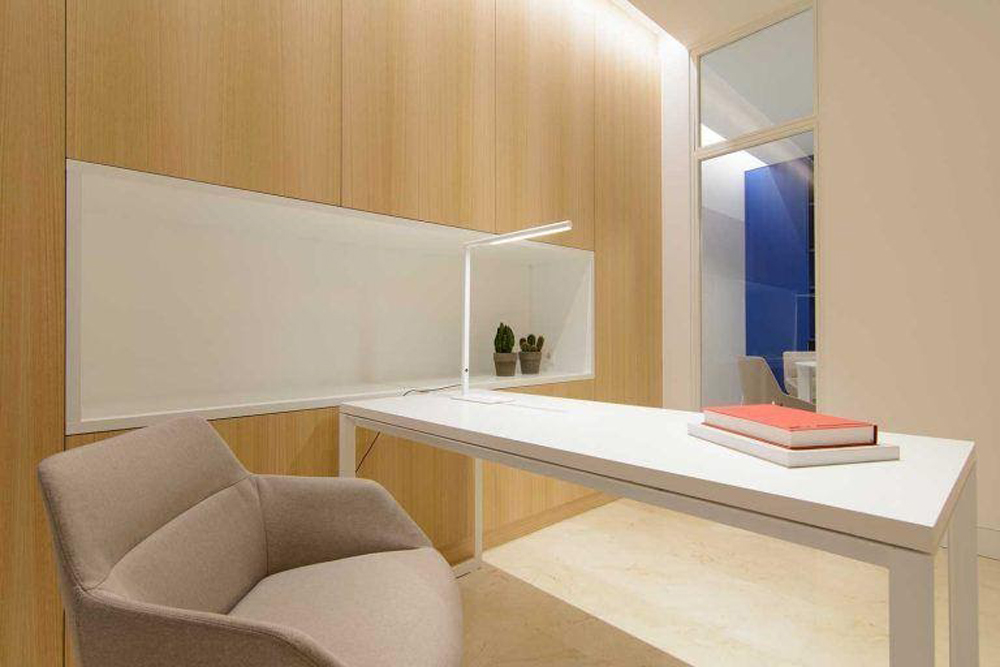
With unknowns to be cleared up and the elements known, the two architects and the graphic designer got down to work until they found a balanced solution. The neutral atmosphere and the luminosity provided by the white color are complemented in this work place with the warmth of a wood without many grains and a lot of texture.
"This project in particular was for offices, and the space they had at that time was very divided, and it was about taking advantage of the luck they had to give to two facades: one on Calle Príncipe and the other at the back, where is the headquarters of the Official College of Architects of Galicia and it has an impressive gallery. We wanted to give it a lot more light, because in the end it is a work space and we are very badly used to being all day with artificial light connected. So it is looked for a very neutral space, working a lot with white and reducing touches of color to wood, especially in the most noble areas, such as the manager's office and the meeting room for me", adds the co-creator of the project .
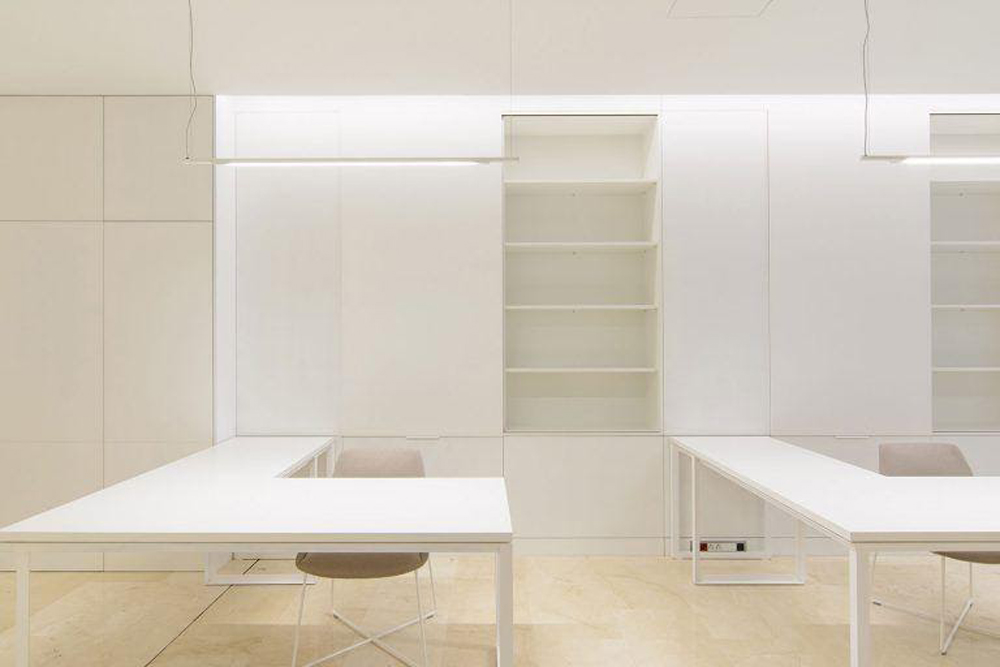
"We liked to give that point with wood, and look for that almost domestic space, and not work so much in the office with glass and other colder materials. For us it was almost like the key word. So, for example, those direct lights, almost reading, to be comfortable. That's the intention a bit, "he adds. The choice of eucalyptus was as natural as that of Finsa's veneers ("it has a very good reputation and a wide variety of products, and we like it a lot, we follow it a lot because it works very well and we are very happy, really. I do I can, I'm going to continue working with them", recognizes Gimeno), and the result adjusts with millimeter precision to what was designed.
All, of course, with a clear intention revealed in the details: "There was a game: in the work area, which is open, we wanted to make it all whiter, and instead, in the office and the meeting room we did on the contrary: instead of being the wooden niche and the white doors, it was done the other way around, the white niche and the wooden doors, to give it that distinction that they are rooms in which they are going to meet with the most important people. , we changed and made wood the most noble material", he explains.
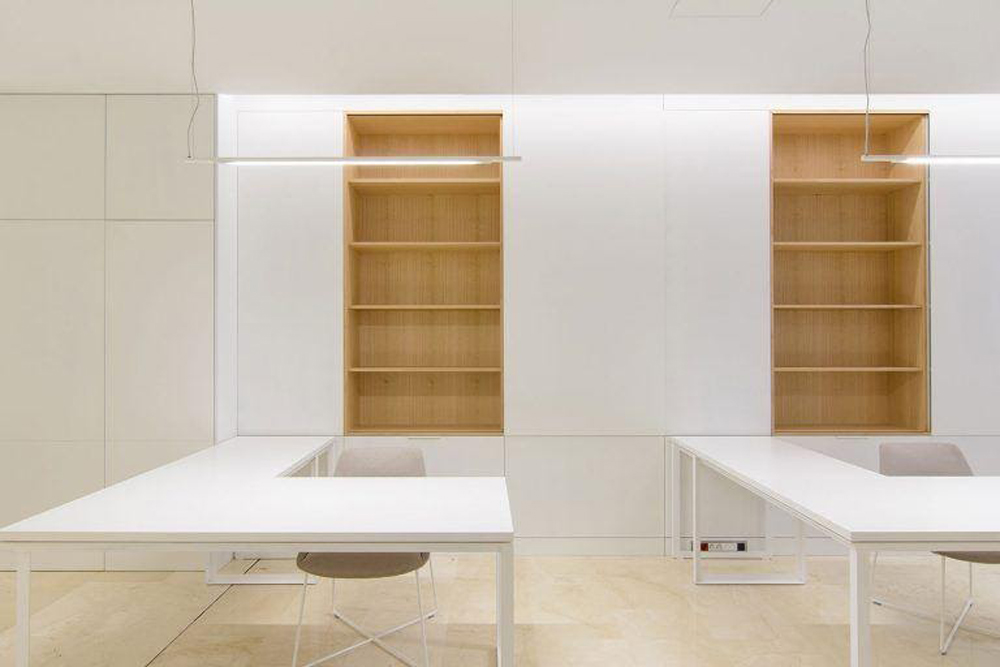
Functionality achieves in this space a leading role shared with warmth and order, since practically the entire meeting room has a sliding door made of eucalyptus wood that hides a large-capacity storage space that serves two objectives, one present and one future. "A continuous piece of furniture was made to take advantage of all the storage and to optimize, for example, shelves full of files. An attempt was made to ensure that they had just the right and necessary paper on top of the tables," says the young founder of B&VA. In the long term, this choice presents another advantage of equal or greater pragmatism: the expansion of the work space by removing the large panels that cover part of the premises.
